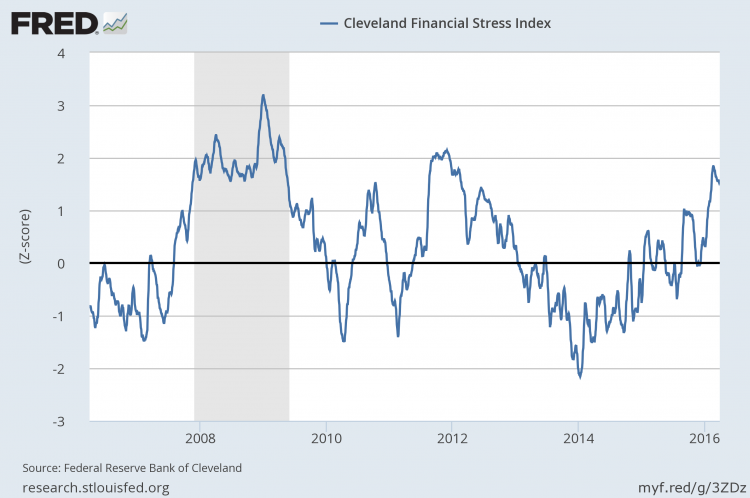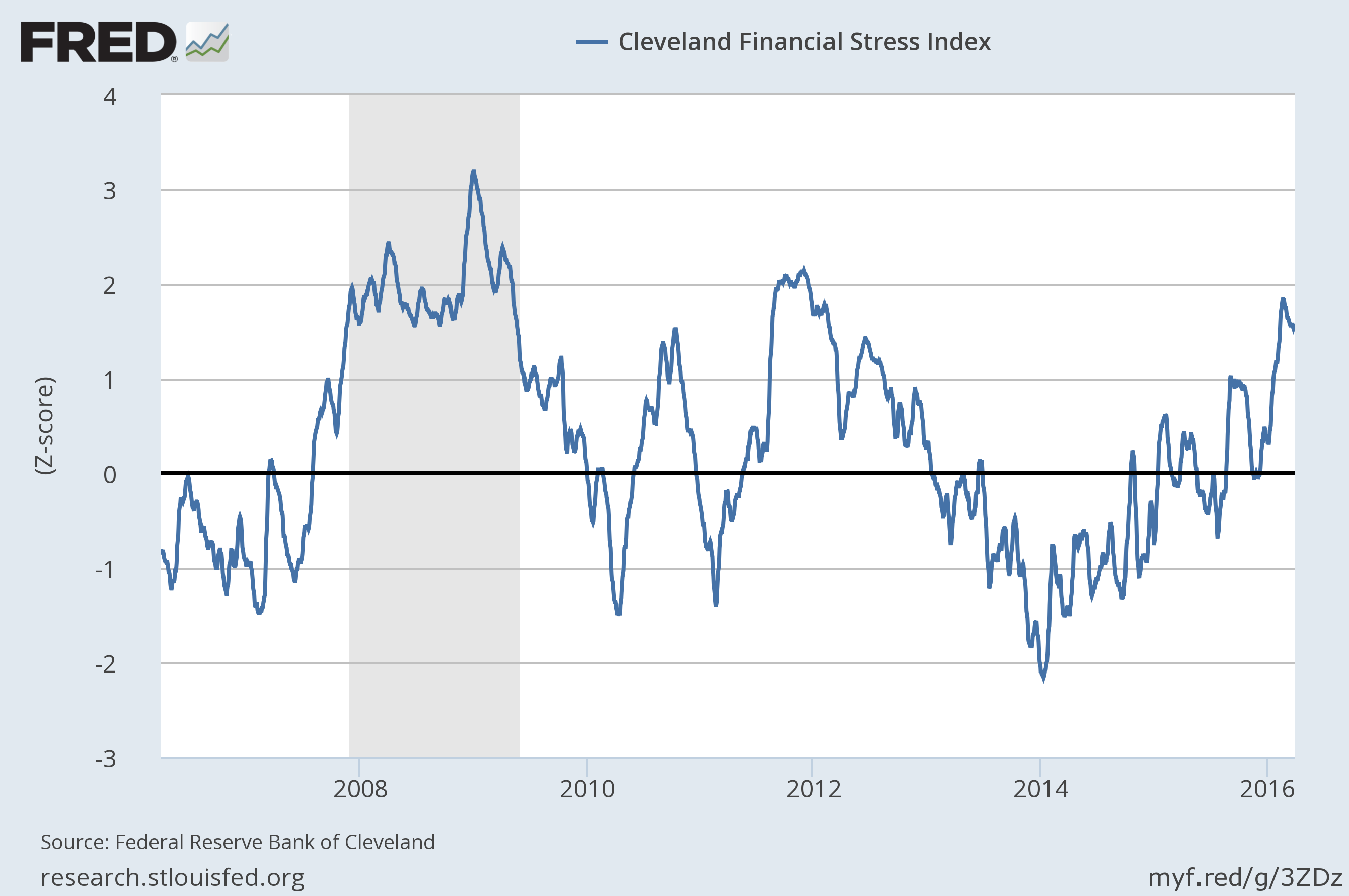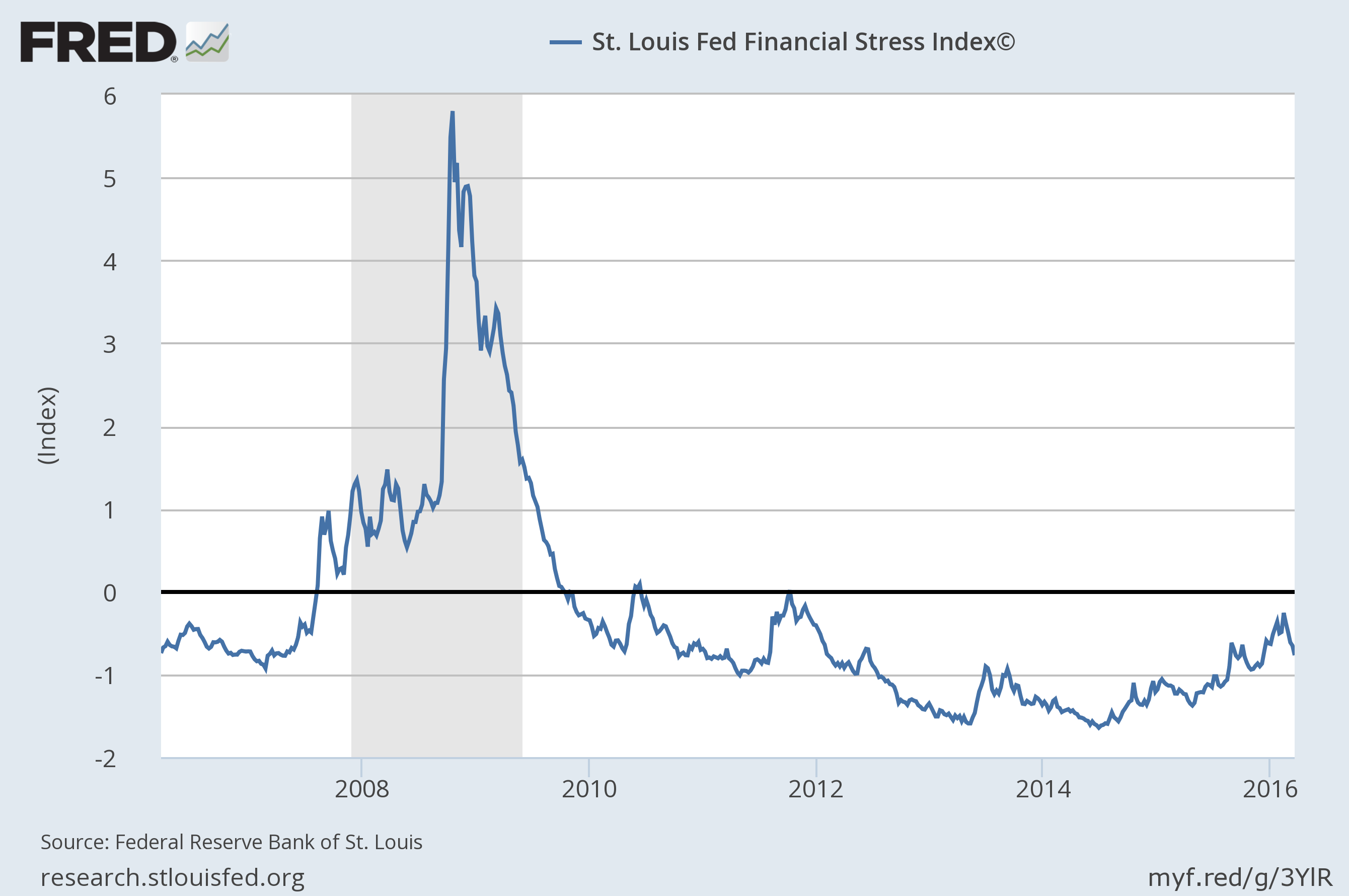
Financial stress in the US economy has ticked lower in recent weeks after jumping to a four-year high in February. The Cleveland Fed’s multi-factor benchmark is still elevated by historical standards, but this daily measure of distress in the financial system has fallen moderately through most of this month to date. Risk levels have also pulled back in March via two other financial stress indexes published by regional Fed banks.
The main takeaway: financial stress is no longer threatening to cross into the red zone for the immediate future. It’s important to recognize that financial risk has climbed relative to the unusually low levels of recent years, but for the moment the threat of an acute warning signal has receded.
Let’s review the numbers for four indexes published by regional Fed banks that quantify stress in the financial system across a range of factors. Each benchmark uses a different methodology and dataset and so reviewing all of the indexes provides a diversified risk profile of the US financial system. Here’s a summary of current readings, based on figures collected this morning (Mar. 30).
Cleveland Fed US Financial Stress Index
This daily index from the Federal Reserve Bank of Cleveland has declined in recent weeks after reach a four-year high in February. The current +1.55 reading for Mar. 28 is considered a “moderate” stress level–a notch below the high risk range for this benchmark.

St. Louis Fed US Financial Stress Index
This weekly measure of financial stress has fallen in March, reaching -0.770 for the week through Mar. 18—the lowest so far this year. The current below-zero reading reflects “below-average market stress,” according to the St. Louis Fed.

Chicago Fed National Financial Conditions Index
The Chicago Fed’s weekly measure of US financial stress fell to its lowest year-to-date reading for the week through Mar. 18, dipping to -0.64. The current level reflects “loose” conditions, as per readings below zero. Only values above zero indicate financial conditions that are tighter than average.















